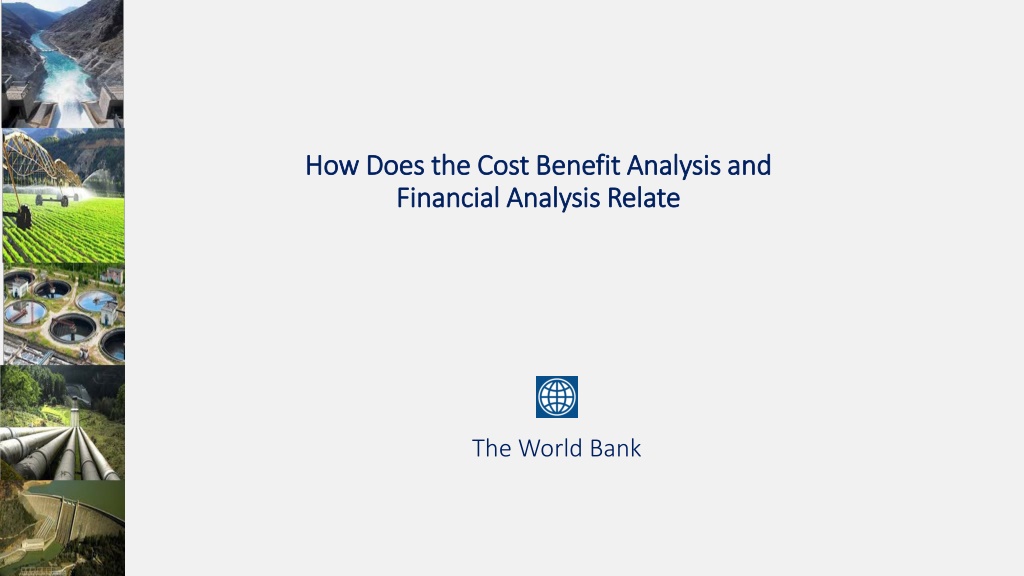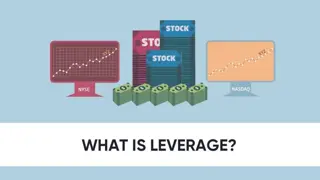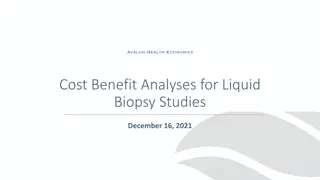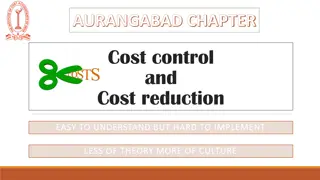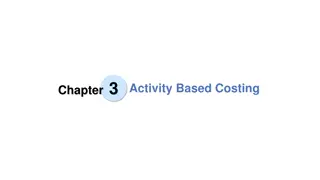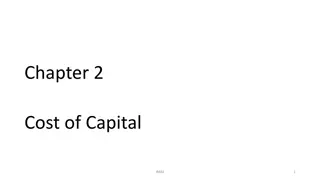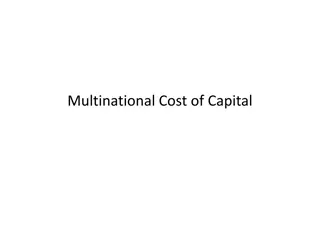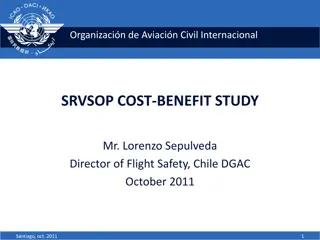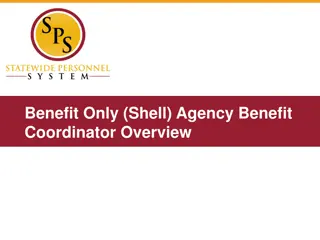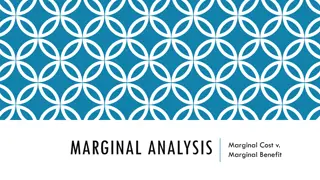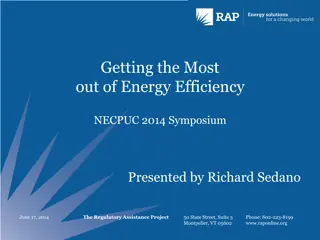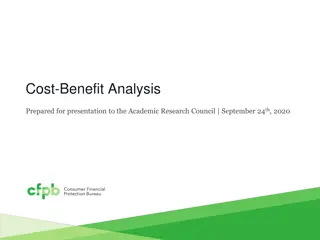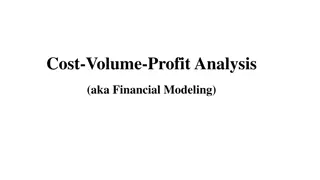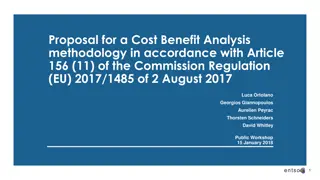Understanding the Relationship Between Cost Benefit Analysis and Financial Analysis
The intersection of cost benefit analysis and financial analysis is crucial for evaluating projects, with economic analysis focusing on incremental benefits and costs while financial analysis ensures sustainability. Perspectives like those of the government, utility manager, and private lender shape the analytical scope. Development professionals aim to balance economic value with financial sustainability to ensure projects' success.
Download Presentation

Please find below an Image/Link to download the presentation.
The content on the website is provided AS IS for your information and personal use only. It may not be sold, licensed, or shared on other websites without obtaining consent from the author. Download presentation by click this link. If you encounter any issues during the download, it is possible that the publisher has removed the file from their server.
E N D
Presentation Transcript
How Does the Cost Benefit Analysis and How Does the Cost Benefit Analysis and Financial Analysis Relate Financial Analysis Relate The World Bank
Difference Between Financial vs. Economic Analysis The Economic analysis focuses on incremental benefits and costs arising from a given Project and includes both project benefits and externalities. This is typically best achieved through a With and Without Test as you can better identify the incremental values. While the Project specific analysis may be important for the Financial test, the consolidated analysis is even more important to ensure sustainability of the utility or the system. The economic test is not usually concerned with cash flows so the ENPV or EIRR usually suffice to ensure the Project s returns surpass the Opportunity Cost of Capital of the Government. The Financial Sustainability Analysis must find a solution to ensure that all financial obligations are satisfied.
Whos Perspective Determines the Analytical Scope and Financial Test Government Should be principally concerned about value to society and best use of available resources Project s Economic Rate of Return Utility Manager Should be concerned about the overall financial sustainability of the utility Consolidated cash flow analysis drives requirement for profitability What about us? What should be our main focus? What analysis is important to us? BOT WTP Operator Should be concerned about reliability of cash flows driven by Rate of return requirements Project s cash flow analysis, and FIRR calculation against required WACC Private Lender Should be concerned about overall capacity of the utility to service debt Consolidated debt service analysis and overall profitability of the utility
As Development Professionals We should focus on expanded or improved services hence the economic value of the Project. However, we also need to ensure the financial sustainability of the utility. The Role of the Financial Analyst is to Find a Financially Sustainable Solution to Economically Justified Projects
So the Difference Between Financial vs. Economic Analysis is Much More than differentiating Costs and Benefits!
Determining the Justification for VGF Financing Financial Costs & Benefits Adjustments for Economic Costs & Benefits Financial Viability Gap 23 21 37 NPV in US$ millions 44 23 21 13 3 Water Water Collection Collection Savings Savings Health Health Related Related Transfer Transfer Payments Payments Costs Costs Revenues Revenues
A Simplified Approach to Deriving Economic Costs and Benefits Year 0 1 2 3 4 5 6 7 8 9 10 Financial Incremental Cash Flows Capital Investments Purchases of Land And Structures Construction cost& Overhead Purchases of Equipment Other Investment Outlays Additions to Working Capital Contingency for unexpected Work Total Investment Outlays Less: Salvage Value of any Retired Assets Net Investment Requirements Residual Value of the investment Incremental Revenues of the Project ( ) ( ) ( ) ( ) ( ) ( ) ( ) ( ) ( ) ( ) ( ) + Water Revenue Wastewater Revenue Other (opex subsidies) Total Project Revenue + + + + + + + + + + + Incremental Operating Costs of the Project Direct Labor Power cost Chemicals Direct Overhead Items Other Operating Costs Operating Costs of the Project Incremental Income Taxes Adjustment of Financial Cash Flows to Reflect Impact on Exisitng Consolidated Operations Operational Cost Savings ( ) ( ) ( ) ( ) ( ) ( ) ( ) ( ) ( ) ( ) ( ) ( ) ( ) ( ) ( ) ( ) ( ) ( ) ( ) ( ) ( ) ( ) Power Cost Savings NRW reduction Improvement in collections Improvewment in Management Systems Adj for Impact of Existing Ops. Total Net Incremental Financial Flows + + + + + + + + + + + ( + ) ( + ) ( + ) ( + ) ( + ) ( + ) ( + ) ( + ) ( + ) ( + ) ( + ) Adjustments for Economic Incremental Cash Flows Tax Payments and subsidies to consumers as inflows (e.g. import duties, indirect and direct taxes, IDC that were included in financial flows) Subsidies (should be treated at outflows) Shadow Price Adjustments if any Benefits To Reduced Mortality and Better Healthcare Benefits from Reduced Pollution (e.g. the added cost of treating polluted water) Benefits from Water collection savings Total Adj for Incremental Economic Cash Flows Net Economic Cash Flows + + + + + + + + + + + ( + ) ( + ) ( + ) ( + ) ( + ) ( + ) ( + ) ( + ) ( + ) ( + ) ( + ) ****Exclude Financing and Depreciation costs from cash flows. This is a total project return calculation. ****For the Economic NPV calculation the discout rate is the opportunity cost of capital og the Government
